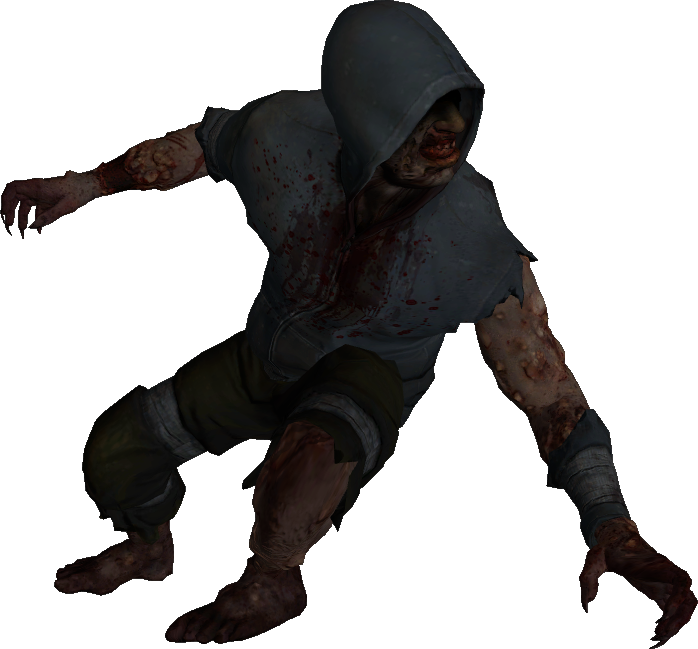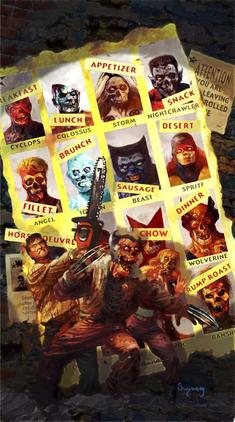Bending Reality: A Deep Dive into Half-Life 2's Groundbreaking Physics Engine Half-Life 2.

Half-Life 2. The name alone evokes memories of headcrabs, Combine oppressors, and a dystopian world brought to life with unparalleled detail. But beyond the captivating story and iconic characters, lies a technical achievement that redefined gaming: its physics engine. As a PC gamer who’s seen technology come and go, and as someone who’s spent a lot of time tinkering with Source engine games, I can confidently say that Half-Life 2's physics were not just impressive; they were revolutionary. It wasn’t just about making objects move realistically; it was about empowering players to interact with the world in meaningful, emergent ways. Let's delve into what made the Half-Life 2 physics so groundbreaking, and how the Source Engine Physics set a new standard.
The iconic Gravity Gun in action, demonstrating the core physics mechanic of Half-Life 2.
The Power of Havok: More Than Just Ragdoll Physics
At the heart of Half-Life 2's simulated reality was the Havok physics engine. While ragdoll physics were becoming more common, Half-Life 2 took it to another level. Each object in the game, from a simple brick to a complex vehicle, had its own mass, density, and collision properties. This wasn't just window dressing; it was integral to the gameplay. Havok physics engine allowed for a level of realistic game physics not seen before.
The use of realistic physics extended beyond just how things looked when they fell. It affected how they behaved when interacting with other objects, how they responded to explosions, and how they could be used to solve puzzles. This is a far cry from the canned animations and pre-scripted events that defined much of game physics before then.
 An example of the complex physics puzzles Half-Life 2 was known for.
An example of the complex physics puzzles Half-Life 2 was known for.
Object Interaction: The Soul of Half-Life 2
What truly set Half-Life 2 apart was the depth of Half-Life 2 object interaction. Every object, no matter how small, felt like it had a purpose. You could stack boxes to reach a higher ledge, use a plank of wood to bridge a gap, or even use debris as makeshift cover in a firefight. This realistic object manipulation was revolutionary.
The Combine's oppressive presence wasn't just conveyed through dialogue and level design; it was reinforced by the physical state of the world. Debris littered the streets, furniture was overturned, and structures were crumbling. All of this contributed to a sense of tangible decay and disorder that made the game world feel truly lived-in.
 Environmental physics contributes to the immersive and realistic world of Half-Life 2.
Environmental physics contributes to the immersive and realistic world of Half-Life 2.
The Gravity Gun: A Masterclass in Game Design
No discussion of Half-Life 2's physics is complete without mentioning the Half-Life 2 Gravity Gun, or, more formally, the Zero-Point Energy Field Manipulator. This iconic weapon allowed players to manipulate objects with gravity, turning everyday items into lethal weapons or essential tools for solving puzzles. Understanding how does Half-Life 2 gravity gun work is crucial to understanding the core design of the game.
 The Gravity Gun, an integral part of Half-Life 2's unique gameplay and physics.
The Gravity Gun, an integral part of Half-Life 2's unique gameplay and physics.
The Gravity Gun wasn't just a cool weapon; it was a core mechanic that encouraged experimentation and creativity. Did you need to clear a path blocked by debris? Use the Gravity Gun. Were you facing a group of enemies? Launch explosive barrels at them. This level of player agency was unprecedented, and it transformed the way we thought about interaction in video games.
The Gravity Gun's functionality showcased the Source engine's ability to handle complex physics calculations in real-time. The force applied, the weight of the object, and the trajectory all felt remarkably accurate, contributing to the overall sense of believability. It became a symbol of Half-Life 2 physics based gameplay.
Physics Puzzles: Thinking Outside the Box (Literally!)
The physics engine wasn't just used for combat; it was also cleverly integrated into puzzle design. Players were constantly challenged to use their understanding of physics to overcome obstacles, whether it was building a makeshift bridge, creating a counterweight, or manipulating objects to trigger mechanisms. These Half-Life 2 physics puzzles best showcased the engine's versatility.
 The game challenged players to solve complex problems using physics.
The game challenged players to solve complex problems using physics.
These puzzles were often open-ended, allowing for multiple solutions and encouraging players to think creatively. This fostered a sense of ownership and accomplishment, making the game feel more engaging and rewarding. Solving these puzzles reinforced the feeling that you were actively shaping the world around you, rather than simply following a pre-determined path.
Imperfections and Emergent Gameplay: The Beauty of Bugs (Sometimes)
Of course, no physics engine is perfect, and Half-Life 2 was no exception. There were instances of objects behaving erratically, clipping through walls, or getting stuck in odd positions. However, even these Source Engine physics bugs and glitches often led to unexpected and hilarious moments.
Sometimes, these glitches even opened up new possibilities for gameplay. Players discovered unconventional ways to bypass obstacles, exploit enemy AI, or simply create absurd and entertaining scenarios. These emergent moments, born from the engine's imperfections, became a part of the game's charm and legacy.
 Even glitches could lead to funny moments, adding to the charm.
Even glitches could lead to funny moments, adding to the charm.
The Legacy: Shaping the Future of Gaming
Half-Life 2's physics engine had a profound impact on the gaming industry. It raised the bar for realism and interactivity, inspiring countless developers to push the boundaries of what was possible. The Source engine became a benchmark for game engine physics, and its influence can still be felt in modern games. The game answered the question " Why is Half-Life 2 physics so good?" by setting new standards for physics based gameplay and environmental interaction.
 Modern games still show the influence of Half-Life 2's physics engine.
Modern games still show the influence of Half-Life 2's physics engine.
From environmental destruction to object manipulation, Half-Life 2's legacy lives on in the games we play today. It demonstrated the power of physics to enhance immersion, create emergent gameplay, and empower players to interact with the world in meaningful ways.
 The evolution of realistic physics in video games.
The evolution of realistic physics in video games.
Final Thoughts
Half-Life 2's physics engine was more than just a technical achievement; it was a creative tool that empowered players and redefined the gaming landscape. It seamlessly blended realism with interactivity, creating a world that felt both believable and engaging. So the next time you're flinging a physics object with the Gravity Gun, remember the game that started it all, and appreciate the legacy of Half-Life 2's groundbreaking physics. It wasn't just a game; it was a glimpse into the future of interactive entertainment, proving that Half-Life 2 physics engine groundbreaking.
 Showcases how environmental objects can be used for combat.
Showcases how environmental objects can be used for combat.
 The game's advanced ragdoll physics.
The game's advanced ragdoll physics.